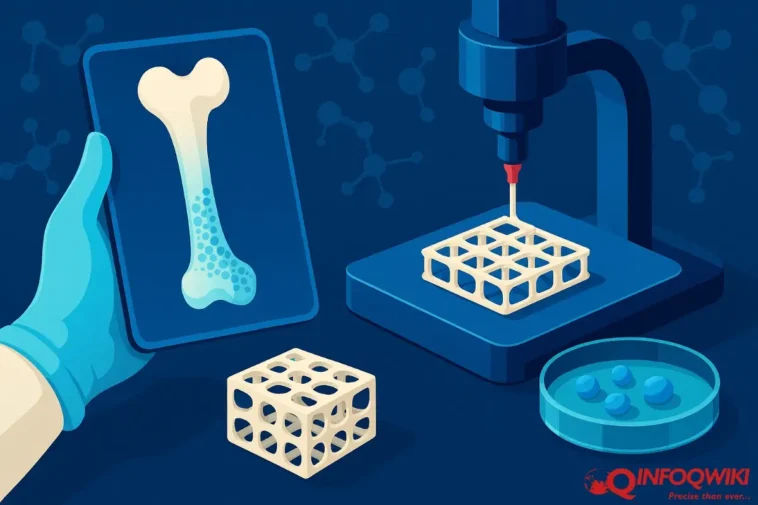The field of regenerative medicine is undergoing a transformative shift with the advent of 3D-printed bone tissue regeneration. This innovative approach combines advanced bioprinting techniques with biomaterials to create customised scaffolds that promote bone healing and integration. Recent developments have showcased the potential of these technologies to address complex orthopaedic challenges, offering personalised and efficient solutions for patients worldwide.
Table of Contents
Advancements in 3D Bioprinting for Bone Regeneration
Researchers have made significant strides in developing 3D-printed scaffolds that mimic the natural bone environment. These scaffolds are designed to support cell attachment, proliferation, and differentiation, essential processes for effective bone regeneration. By utilising materials such as polylactic acid (PLA) and calcium phosphate, scientists have created structures that not only provide mechanical support but also facilitate the growth of new bone tissue and blood vessels.
One notable advancement involves the integration of bioactive molecules and stem cells into the scaffolds. This combination enhances the regenerative capacity of the constructs, leading to improved healing outcomes. Moreover, the use of patient-specific imaging data allows for the creation of personalised implants that precisely match the defect site, ensuring better fit and function.
Clinical Applications and Success Stories
The practical applications of 3D-printed bone scaffolds are expanding rapidly. In clinical settings, these scaffolds have been used to treat critical-sized bone defects, which are too large to heal naturally. By providing a conducive environment for bone growth, the scaffolds have demonstrated success in promoting tissue regeneration and restoring function.
For instance, a study involving the use of 3D-printed β-tricalcium phosphate (β-TCP) scaffolds in combination with stem cell therapy showed promising results in enhancing bone formation and reducing healing time. Such approaches are paving the way for more effective treatments of complex bone injuries and diseases.
Challenges and Future Directions
Despite the remarkable progress, several challenges remain in the widespread adoption of 3D-printed bone tissue regeneration. Ensuring the long-term stability and integration of the scaffolds, scaling up production for larger defects, and navigating regulatory pathways are areas that require ongoing research and development.
Future directions include the exploration of smart scaffolds that can respond to environmental cues, the incorporation of growth factors for enhanced healing, and the development of hybrid materials that combine the strengths of different biomaterials. Collaborative efforts between engineers, biologists, and clinicians are essential to overcome these hurdles and bring these innovative solutions to routine clinical practice.
3D-printed bone tissue regeneration represents a significant leap forward in orthopaedic medicine. By harnessing the power of bioprinting and biomaterials, researchers are creating tailored solutions that address the unique needs of each patient. As technology continues to evolve, these advancements hold the promise of more effective, personalised, and less invasive treatments for bone-related conditions, ultimately improving patient outcomes and quality of life.




